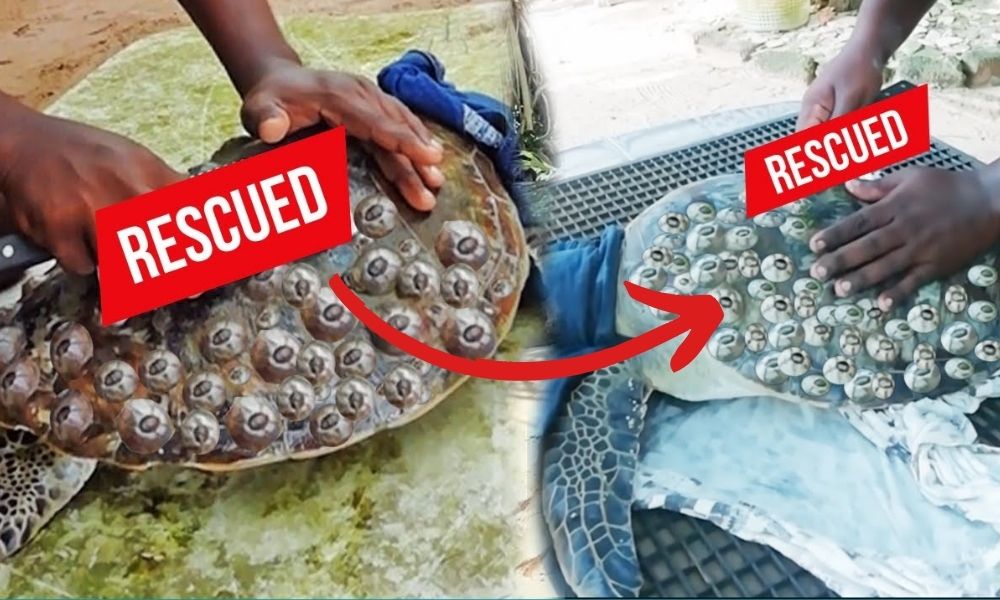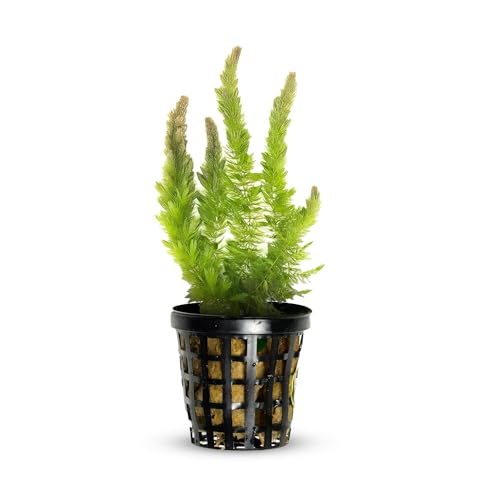To teach your pet turtle, start with a clean and spacious habitat, with a basking area and a water area. Use positive reinforcement, such as treats, to encourage desired behaviors, and be patient and consistent with your training.
Teach your turtle to come when called, recognize feeding time, and tolerate handling. Provide enrichment activities, such as hiding spots and toys, to keep your turtle mentally stimulated. Finally, offer regular interaction and socialization to build a bond with your pet.
By following these steps, you can successfully teach your pet turtle and ensure a happy and healthy relationship.

Preparing To Teach Your Pet Turtle
Discover the essential steps to effectively teach your pet turtle with this comprehensive guide. From creating a suitable habitat to implementing training techniques, you’ll learn everything you need to know for a successful teaching experience.
Creating A Suitable Habitat
Before you start teaching your pet turtle, it’s crucial to create a suitable habitat for them. Turtles require specific environmental conditions to thrive and learn effectively. Make sure you provide the following:
- A spacious tank or enclosure with enough room for your turtle to move around comfortably.
- A basking area where your turtle can rest and soak up heat from a heat lamp or UVB light.
- A clean and accessible water source, such as a shallow dish or a pond area, for swimming and drinking.
- A substrate that simulates the natural environment of a turtle, like gravel or sand, to make them feel more at home.
- Plants and hiding spots to provide a sense of security and stimulation.
Remember, creating a suitable habitat is essential for your turtle’s overall well-being and will greatly influence their ability to learn.
Gathering The Necessary Supplies
Now that you have set up the perfect habitat for your pet turtle, it’s time to gather the necessary supplies for their training sessions. Here are some essentials:
| Supplies | Description |
|---|---|
| Quality turtle food | A balanced diet is crucial for your turtle’s health and vitality. Consult a veterinarian for proper nutrition guidelines. |
| Target stick | A long stick with a distinct object at the end to direct your turtle’s attention and movements during training. |
| Treats | Small, tasty rewards to reinforce positive behaviors and motivate your turtle during the training process. |
| Clean water source | Regularly refreshing your turtle’s water supply is crucial for their hygiene and overall well-being. |
| Timer or watch | Keeping track of time during training sessions ensures that neither you nor your turtle gets overwhelmed. |
| Patience and consistency | Teaching any pet requires patience and consistency. Stay calm and positive throughout the process. |
Gathering these necessary supplies will set you up for successful and fulfilling training sessions with your pet turtle. Remember, patience and consistency are key!

Establishing A Bond With Your Turtle
When it comes to teaching your pet turtle, establishing a strong bond is crucial for effective training and a happy, healthy relationship. Spending quality time and using positive reinforcement are key strategies for fostering a connection with your turtle.
Spending Quality Time
Spending quality time with your turtle is essential for building a strong bond. Create a designated area in your home where you can interact with your turtle regularly. Set aside time each day for activities such as feeding, handling, and observing your pet. Being consistent and patient is vital in developing trust and familiarity between you and your turtle.
Using Positive Reinforcement
Utilizing positive reinforcement techniques can further strengthen your bond with your turtle. Offering favorite treats as rewards for desired behaviors can encourage positive interactions and cooperation. Praising and gentle petting also serve as effective forms of positive reinforcement, helping your turtle associate your presence with positive experiences.
By devoting time and using positive reinforcement, you can establish a meaningful bond with your pet turtle, laying a solid foundation for successful teaching and a fulfilling companionship.
Teaching Basic Commands And Tricks
Teaching basic commands and tricks to your pet turtle can be a fun and rewarding experience. Not only can it strengthen the bond between you and your turtle, but it can also provide mental stimulation and exercise for your pet. It’s important to start with simple commands before gradually increasing the difficulty to keep your turtle engaged and motivated.
Start With Simple Commands
Begin by teaching your pet turtle simple, basic commands. These may include commands such as “come,” “stay,” or “out.” Use repetition and positive reinforcement to help your turtle understand and learn these commands. Start with short training sessions to prevent your turtle from becoming bored or restless.
Using Visual Cues
Consider using visual cues to assist in teaching your pet turtle. For example, use a small, colorful object to guide your turtle to different locations or to perform certain tricks. Visual cues can be especially helpful for turtles, who are known to be visually oriented animals.
Gradually Increase The Difficulty
As your pet turtle becomes more proficient at following basic commands, you can begin to gradually increase the difficulty of the commands and tricks you are teaching. Introduce more complex commands and challenges to keep your turtle mentally stimulated and engaged.
Promoting Mental Stimulation
Looking to promote mental stimulation in your pet turtle? Teach them new tricks, introduce puzzle toys, and provide a stimulating environment with hiding spots and different textures to keep their minds active and engaged.
Introducing Puzzle Toys
One effective way to promote mental stimulation in your pet turtle is by introducing puzzle toys. Puzzle toys provide a fun and engaging activity for your turtle, stimulating their brain and preventing boredom. These interactive toys challenge your pet to figure out how to access their food or treats, keeping them entertained and mentally sharp.
When choosing puzzle toys for your pet turtle, opt for ones that are specifically designed for reptiles. Look for toys that have different compartments or hidden areas where you can place small treats or pieces of food. This will encourage your turtle to explore and use their problem-solving skills to access the rewards.
When introducing a new puzzle toy to your turtle, start with a simple one and gradually increase the difficulty level as they become more proficient at solving the puzzles. This will ensure they are continually challenged and engaged.
Creating An Enriching Environment
In addition to using puzzle toys, creating an enriching environment is crucial for promoting mental stimulation in your pet turtle. A dull and monotonous environment can lead to boredom and a lack of mental stimulation. By providing your turtle with an enriching habitat, you can encourage their natural behaviors and keep their minds active.
Here are some ways you can create an enriching environment for your pet turtle:
- Include various types of substrate in their tank, such as sand, gravel, or rocks, to stimulate their senses and provide different textures to explore.
- Add tank decorations, such as driftwood, rocks, or plants, to create hiding spots and climbing opportunities for your turtle.
- Provide a variety of safe and non-toxic toys and objects for your turtle to interact with, such as floating platforms, tunnels, or floating balls.
- Ensure your turtle has access to both water and a dry basking area to meet their specific needs and allow for different activities.
By creating a stimulating environment for your pet turtle, you are enabling them to engage in natural behaviors, explore their surroundings, and stay mentally sharp.

Maintaining Consistency And Patience
Teaching your pet turtle requires maintaining consistency and patience. Establish a regular routine for feeding, cleaning, and handling. Use positive reinforcement and be patient while your turtle learns. With time and dedication, your pet will gradually understand and respond to your teachings.
Establishing A Routine
Teaching your pet turtle requires establishing a consistent routine. Turtles are creatures of habit, and they thrive when their environment is predictable. Creating a structured daily routine will help your turtle understand what is expected of them.
- Designate feeding times: Feeding your turtle at the same time each day will create a routine they can rely on. This consistency encourages them to be alert and ready for nourishment.
- Scheduled tank cleanings: Regularly clean your turtle’s tank at specific intervals. By doing so, you create a clean and healthy environment for them. This routine will also help you monitor their overall well-being.
- Physical activity: Incorporate exercise into your turtle’s routine. Provide them with a designated time and space outside of their tank to explore and stretch their legs. This will keep them active and stimulated.
Being Patient And Persistent
Teaching a turtle takes time and requires patience. Turtles are not naturally inclined to learn commands like dogs or cats. It’s important to understand that progress may be slow, but being patient and persistent will yield rewards in the long run.
- Repetition is key: Turtles learn through repetition. Regularly repeating commands and actions will help them understand what is expected of them. Be consistent in your cues and rewards to reinforce their behavior.
- Break tasks into smaller steps: Turtles, like any other pet, learn best when tasks are broken down into smaller, manageable steps. Breaking down a complex behavior into smaller tasks will not overwhelm them and will make the learning process easier.
- Use positive reinforcement: Reward your turtle for their desired behaviors. Using treats or praise will motivate them to continue with positive actions. Consistently rewarding their behavior reinforces their understanding of what you expect from them.
- Keep training sessions short and frequent: Turtles have a shorter attention span compared to other pets. Keep training sessions brief but frequent. This way, you can maintain their engagement and prevent them from becoming bored or overwhelmed.
Being consistent and patient when teaching your pet turtle is essential. Establishing a routine and maintaining persistence will help your turtle adapt and learn. Remember to be patient with your turtle’s progress, as they may require more time to grasp commands compared to other pets. By maintaining consistency and patience, you’ll create a rewarding learning experience for both you and your turtle.

Frequently Asked Questions On How To Teach Your Pet Turtle?
How Do You Train A Pet Turtle?
To train a pet turtle, start by creating a consistent feeding schedule. Use treats as positive reinforcement for desired behaviors. Handle your turtle gently and regularly to get them accustomed to you. Encourage them to explore different environments. Be patient and consistent in your training approach.
Are Turtles Easy To Train?
Turtles can be trained but it takes time and patience. With consistent and positive reinforcement, they can learn simple tasks.
How Do You Tame A Pet Turtle?
To tame a pet turtle, handle it gently, provide a suitable tank with clean water and proper lighting, and offer a varied diet. Gradually introduce yourself to the turtle and spend time near its tank to build trust. Be patient and avoid sudden movements or loud noises.
How Do You Get Your Turtle To Trust You?
To gain your turtle’s trust, be patient, gentle, and consistent in your interactions. Handle your turtle with care, avoid sudden movements, and provide a comfortable and secure environment. Spend quality time with your turtle regularly, offering food, and gradually introduce touch.
Building trust takes time and consistency.
How Long Do Pet Turtles Live?
Pet turtles can live for several decades, with the average lifespan ranging from 20 to 40 years.
Conclusion
Teaching your pet turtle can be a rewarding experience for both you and your shelled companion. By following the steps outlined you can establish a strong bond with your turtle and help them learn new behaviors. Remember to be patient, consistent, and provide a suitable environment for your turtle’s learning.
With time and practice, your turtle will be thriving in their newfound knowledge. So go ahead, embark on this exciting journey of teaching your pet turtle and enjoy the progress you make together.





Leave a Reply